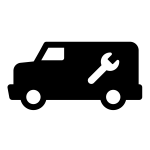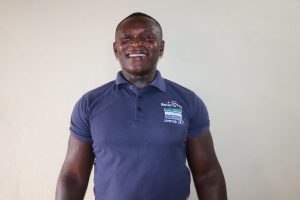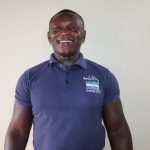Targrin is the most populated community in the entire Kaffu Bullom Chiefdom with a total population of 13,000 people. The lack of access to clean and safe water here sends most people to other areas far into the community searching for a safe source. The sources of safe water, however, are scarce. Most water sources are contaminated with E. coli and other fecal coliforms.
There are more open and unprotected water wells in the community than protected hand-dug wells. Not only are people forced to venture into faraway communities for water, but the long and crowded lines always erupt into arguments and fights.
Every year, access to safe and clean water is getting harder to come by due to the effects of global warming. The sea levels are rising while deforestation is increasing all over the country. Women and children have to get up very early in the morning to fetch water to drink. There are some sources specifically reserved for drinking water, while other sources are reserved for water used in domestic chores such as bathing, laundry, cooking, and household cleaning. All children are required to bring water home, regardless of the distance they have to travel to do so.
The primary well for 596 people here is suffering in particular from the effects of overcrowding and climate change.
"Getting sufficient and clean water to drink is a very difficult thing to do in this community. The open and unprotected wells outnumber the protected hand-dug wells. Getting water to do other things like cooking, laundry, and bathing is not a hard task, but making sure water for drinking is fetched sufficiently is one of the hardest to achieve," explained Menta Gassama, the Chair of the community.
"I cannot begin to tell you how much we suffer to get clean and safe water to drink."
Tagrin community has a high rate of people suffering from waterborne illnesses due to poor water quality. During the rainy season, there are cases of diarrhea, dysentery, cholera, malaria, and typhoid, all due to the poor quality of water that people drink daily.
What we can do:
Well Rehabilitation
The well marked for this overhaul is dry for a few months every year and needs major work to supply adequate, clean water to the community year-round. The drill team will remove the pump, and a hand auger will be lowered inside and powered by a drill team. This hand auger will allow the team to drill several meters deeper to hit a sufficient water column to ensure the well supplies water throughout all seasons.
As the team drills, the casing will be installed, transforming the bottom of this hand-dug well into a borehole. PVC piping will connect this lower system directly to the pump, a set-up that we know will also improve the quality of water.
Solar pump and filter system
This system will use solar as its primary power source but will be backed up by batteries and a small generator. This system is designed to be maintained and repaired when needed with components that can be purchased locally.
This water distribution system will use several methods to purify the water. The water will be pumped from the well using a solar pump into an overhead 5,000-liter storage tank. Once the tank is full, it will be released by valve and then pass through a stainless steel #80 mesh filter. This filter can be cleaned and reused repeatedly. The larger particulate will be removed as the water transfers into a second 5,000-liter storage tank.
The water at this point will pass through two 20-inch bag filters. The first will filter down to ten microns, and the second will filter down to five microns.
The water will then pass through an ultraviolet system for treatment. The ultraviolet treatment has proven to remove 99.9% of bacterial contamination.
The water will be separated into two distribution lines. The first will be made available to the community for general use (washing clothes, cleaning, and bathing). The second line will flow through a sensor that activates a chlorinator. The proper amount of chlorine will be injected into the water. Injecting a small amount of chlorine into the water will disinfect the containers community members use to collect and store water. The free chlorine levels will be below WHO safe standards. This water will be available as drinking water.
Once this plan is implemented, everyone within the community will have access to safe drinking water, even through the dry months.
Training
Our team will offer hygiene and sanitation training sessions for three days in a row.
Community members will learn how to make a hands-free handwashing station called the "tippy-tap." We will use these tippy taps for handwashing demonstrations and will also teach about other tools like dish racks and the importance of properly penning in animals. We will highlight the need to keep restrooms clean, among many other topics.
This training will also strengthen a water user committee that will manage and maintain this new well. They will enforce proper behavior and report to us whenever they need our help in solving a serious problem, like a pump breakdown.

 Well Rehab
Well Rehab Rehabilitation Project
Rehabilitation Project































